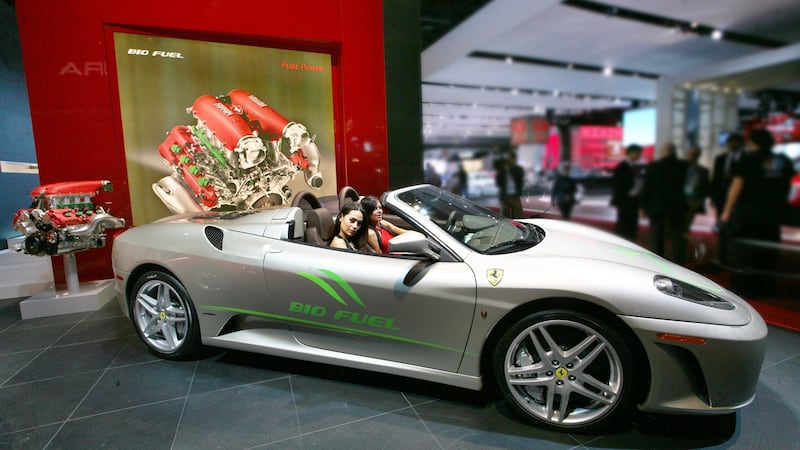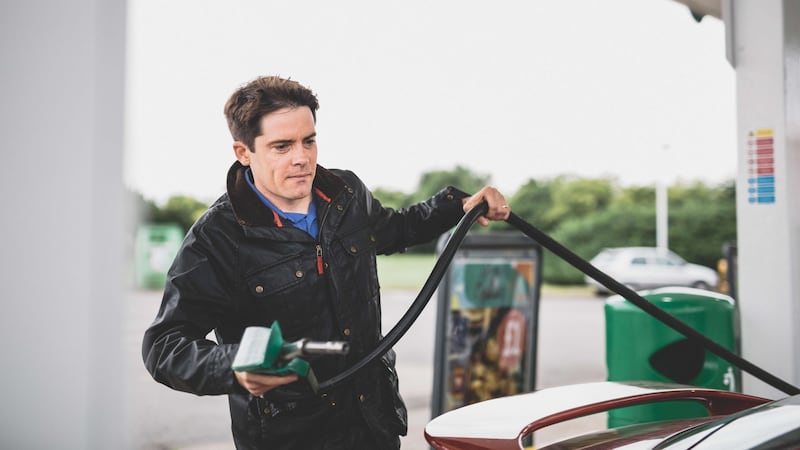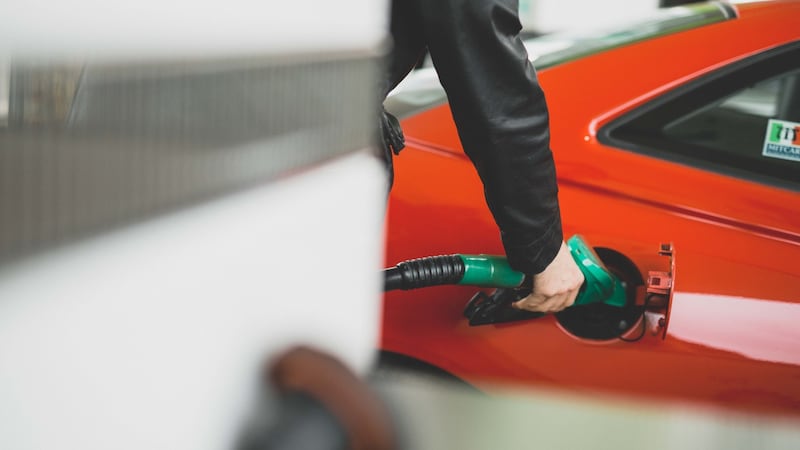While Joe Duffy might have told The Irish Times he's going to ignore the "Vegans and Thunbergs" and have meat for his Christmas dinner, the fact is that Irish farming is going to have to change significantly in the next decade if the country is to meet its carbon emissions commitments.
While much of the focus on emissions reduction is on the transport sector, according to the Environmental Protection Agency's most recent report into CO2 emissions in Ireland, agriculture continues to makes up the biggest chunk of national emissions – 35.4 per cent, against transport's 20.4 per cent.
Many would argue that the focus on transport is only right and proper – after all, not only is it arguably better to spend our carbon budget on feeding people than on driving around, but making cuts in transport emissions is potentially easier than it is in agriculture. You can’t convert cows to battery power, after all.
There is a potential third way, though, and one that combines both agriculture and transport into one – biofuels.

Biofuels have been around for some time. If you've ever watched the famed Indianapolis 500 motor race, then you've seen biofuels in action – those 350km/hour racing cars are all fuelled by methanol, an alcohol distilled from crops. In Ireland, biofuels have a rather less glorious history.
Back in the early 2000s, there was an attempt made to sell E85 biofuel (a mixture of 85 per cent methanol and 15 per cent unleaded petrol) and tax breaks were given for the purchase of cars that could run on the stuff. It was a disaster, though – the cars sold, but the fuel was in short supply, and many owners were accused of just buying their E85 car as a tax dodge, and running it on unleaded. The idea quickly died out.
Since when, biofuels have gone through a quiet renaissance. The EU has introduced regulations that demand a certain level of biofuels in regular pump petrol and diesel – currently, all Irish fuels include a 5 per cent biofuel blend in E5 unleaded petrol.

Indeed, according to the Irish Bioenergy Association (IrBEA), biofuels are actually the unsung heroes of what emissions reductions Ireland has thus far been able to achieve. The group's figures indicate that biofuels make up 98 per cent of all of the renewable energy we currently use (the remaining 2 per cent is renewable electricity) and that in 2020, biofuel use helped the country to avoid some 520,000-tonnes of CO2 emissions.
"520,000 tonnes of carbon dioxide. Now, that means nothing to most people. That's the equivalent of taking about 230,000 petrol cars off the road. So we're talking about something that delivers significant emissions reduction," notes Dr Paul Deane of UCC.
Major expansion
He is co-author of a report for the IrBEA, which suggests a major expansion of biofuel use is critical to achieving the 50 per cent cut in emissions by 2030, which was promised in the Government’s climate action plan. Indeed, since the publication of the plan, the Government has confirmed a commitment to ramp up biofuel use. In January, the blending obligation will go from 11 per cent to 13 per cent of all fuels used.
Around 14 per cent of our biofuels are made here in Ireland. The rest is imported, with a third coming from <a class="search" href='javascript:window.parent.actionEventData({$contentId:"7.1213540", $action:"view", $target:"work"})' polopoly:contentid="7.1213540" polopoly:searchtag="tag_location">China</a>
That, in the short term, means more importing of biofuels. Right now, according to IrBEA, around 14 per cent of our biofuels are made here in Ireland. The rest is imported, with a third coming from China. Most of that is waste cooking oil, which is refined into biodiesel. Some of it – and the aforementioned vegans might want to look away – comes from by-products from meat processing, including animal fats and tallow.
Could Ireland become self-sufficient in biofuels? James Cogan, head of EU and Ireland governmental affairs for Ethanol Europe, reckons it is possible. The IrBEA's ambition is to increase biofuel's contribution to transport energy consumption from 5 per cent now to 35 per cent.
That’s not, incidentally, as a potential substitute for converting the national car fleet to electric power, but as an adjunct to it. After all, even if the Government’s lofty ambition of putting almost one million electric cars on the road by 2030 is met, that will still leave another million or so combustion-engine cars running around. The more biofuel that’s being used by those cars, the better it is for emissions.

In addition, Cogan says there is a huge opportunity for Ireland’s farmers when it comes to biofuel, and not just in making the fuel itself. “It’s not so much because we want to produce ethanol in Ireland for Ireland’s bioenergy demand, even though that would be an important part of the mix of the project. It’s because the whole industry has moved on in the last few years from producing biofuel plus low-grade protein food feed.
“So, tonne-for-tonne, we produce equal amounts of feed and fuel, but we’ve moved on to producing high-grade, human-oriented plant proteins. Those come not from the bits of the plants that go into the fuel – the fuel uses the starch and the sugar, and then the protein and the fibre is going into ever-higher grades of food. That has become the key business case in what we do and that would mean it would be viable and very attractive to do it in Ireland.”
Such a combined production process – making fuels and food from the same crops – could potentially answer one of the biggest criticisms of biofuels: that they take arable land space away from crops that are needed for food. That, it seems, is not the case.
Cogan explains: “The amount of crops and tillage lands that are devoted to biofuels is tiny. It’s in the kind of low single digits, around 1 or 2 per cent, maybe 3 per cent if we’re being conservative. And bear in mind that every year the area of tillage land in Europe reduces by about 2 per cent while the output goes up by 2 per cent. So the impact of biofuels on the whole dynamic is negligible.”
Heavy trucks
“We looked at all the grassland you’d need to produce the five terawatt hours of energy that we want to generate from bio-methane,” Deane says. “It amounts to around 3 per cent of our agricultural base, and that would allow us to start tackling some of the areas that it’s hard to get to with electrification, such as heavy trucks.”
'It's not like places such as <a class="search" href='javascript:window.parent.actionEventData({$contentId:"7.1213540", $action:"view", $target:"work"})' polopoly:contentid="7.1213540" polopoly:searchtag="tag_location">Brazil</a>, where in producing bioethanol they might be clearing some farmland, some forests. We don't have to clear any land here'
It would also give farmers and farming families the opportunity to diversify, while there are other benefits as well in terms of land management, including use of nitrates and manure management. “And then if all heavy transport moves to electric, they can move on to providing fuels for shipping, for aviation. So it’s an asset that is versatile, it is diverse, and it’s something that will, I think, will have a very long shelf life.
"It's not like places such as Brazil, where in producing bioethanol they might be clearing some farmland, some forests. We don't have to clear any land here. The fields that produce grass to feed cows can still produce grass but instead of feeding to cows, you feed it to anaerobic digesters and then the gas that comes off that, instead of venting into the atmosphere, which is what happens when it comes from cattle, we can capture it and use it to power trucks, which displaces your imports of fuels from abroad."
It all sounds like tempting stuff – turning farmers from the midlands into wannabe Opec members – but can it actually be pulled off? Can it deliver the emissions savings being claimed?
The possibilities are there, but some critics claim it's just not possible to switch heavy trucks to biofuels en masse. Fedor Unterlohner, freight manager at climate think-tank Transport & Environment (T&E) says: "Gas trucks are a dead end for cutting emissions and will even exacerbate the climate crisis today. Only emissions-free vehicles are capable of decarbonising trucking."
T&E analysis found powering Europe’s trucks with renewable gas is not an option. “Demand for biomethane by trucks in the six biggest European countries would far outstrip the amount available, even with generous subsidies.”
Nonetheless, the IrBEA wants to push forward with its biofuel plans. Its president Paddy Phelan notes: "The report developed by Dr Deane and his team at UCC is a call to action for the Government to recognise the strong role of sustainable bioenergy. Bioenergy as an indigenous, locally sourced energy source can deliver large emissions reductions across the transport sector in Ireland."














